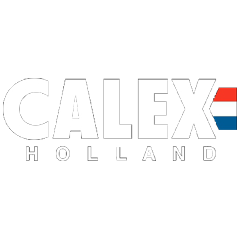
Customer data architecture: Building strong foundations for growth
Customer data architecture is where we explore the critical role of structured data in building strong foundations for business growth. A well-designed customer data architecture lays the groundwork for personalized customer experiences, data-driven decision-making, and long-term business success.
Learn how Vaimo can help you build, manage, and optimize your customer data architecture to drive growth and achieve your business objectives.
Customer data architecture with Vaimo
A robust customer data architecture enables you to create a unified view of your customers, allowing for personalized marketing, targeted sales efforts, improved customer service, and more. By implementing a well-structured customer data architecture, you can enhance customer experiences, increase operational efficiency, and drive growth.
At Vaimo, we specialize in designing and implementing customer data architectures tailored to the unique needs and objectives of our clients. Whether you’re looking to improve customer segmentation, optimize marketing campaigns, or enhance overall customer experiences, our team can help you build a solid foundation for effective data management and utilization.
What is customer data architecture?
Customer data architecture refers to the framework and infrastructure designed to collect, store, manage, and utilize customer data effectively. It encompasses the systems, processes, and technologies used to gather data from various sources, organize it in a meaningful way, and derive valuable insights to drive business decisions.
Our work
-


Calex
Calex is a market leader in decorative lighting and Europe’s biggest brand in WiFi SMART Home, based in the Netherlands and established as a brand…
View project -


Runnings
Runnings is a privately held retailer selling an extensive selection of pet supplies and sporting goods, including hunting and fishing equipment, clothing and footwear, lawn…
View project -


Discovery for Tarkett
Tarkett Group is a leader in the flooring industry and sport surfaces industry, with over 140 years of experience, and works with other top flooring…
View project
How does customer data architecture work?
- We begin by gathering data from various sources such as CRM systems, ecommerce platforms, social media, and more.
- Then we integrate and consolidate the collected data into a centralized database or data warehouse, ensuring a single source of truth.
- Once integrated, the data undergoes cleaning and standardization processes to remove duplicates, errors, and inconsistencies, ensuring data accuracy and reliability.
- Clean and standardized data is stored in a structured format within the data warehouse, making it easily accessible for analysis and reporting.
- We analyze the data using various techniques such as segmentation, profiling, and predictive analytics to derive meaningful insights into customer behavior, preferences, and trends.
- The insights gained from data analysis are used to create actionable strategies for marketing, sales, customer service, and product development.
- Customer data architecture is an ongoing process, continuously optimized to adapt to changing business needs and evolving customer behaviors. Regular monitoring, analysis, and refinement ensure that the architecture remains effective and relevant over time.

Data challenges for digital businesses
Fragmented data01
Data is scattered across various platforms and systems, making it difficult to access and analyze cohesively.
Technology silos02
Systems and tools are not integrated, resulting in isolated data and inefficient operations.
Inconsistent customer experiences03
Customers encounter inconsistencies and gaps in their journey due to disconnected data and processes.
Fragmented ecosystem04
There’s a lack of a unified identification system, leading to inconsistencies in customer data across different touchpoints.
Key benefits of customer data architecture
Personalized Customer Experiences: A well-structured customer data architecture allows businesses to gather, organize, and analyze customer data effectively. This enables them to deliver highly personalized experiences tailored to individual customer preferences and behavior.
By centralizing customer data from various touchpoints, businesses gain a comprehensive understanding of customer behavior, preferences, and purchase history. This deep insight allows for more informed decision-making, better targeting, and more effective marketing strategies.
With a better understanding of customer needs and preferences, businesses can engage with their customers more effectively across multiple channels. This leads to improved customer satisfaction, loyalty, and retention.
Customer data architecture enables businesses to segment their audience more effectively based on various attributes such as demographics, behavior, and purchase history. This allows for more targeted and personalized marketing campaigns that yield higher conversion rates and ROI.
Centralizing customer data and creating a unified view of the customer journey can streamline internal processes and improve operational efficiency. It allows teams to work more collaboratively, reduces data silos, and ensures that everyone has access to accurate and up-to-date customer information.
A well-designed customer data architecture is scalable and flexible, allowing businesses to adapt to changing customer needs, market trends, and business objectives. It can easily accommodate new data sources, technologies, and integrations as the business grows and evolves.
Implementing a robust customer data architecture helps businesses ensure compliance with data protection regulations such as GDPR and CCPA. It also enhances data security by centralizing and standardizing data management processes, reducing the risk of data breaches and compliance violations.

FAQs
The key components of customer data architecture include data collection mechanisms, data storage systems (e.g., data warehouses, customer relationship management systems), data integration tools, data governance policies, and analytics and reporting capabilities.
Some common challenges include:
- Data silos and disparate data sources
- Data quality and consistency issues
- Integration complexity
- Ensuring data privacy and security
- Keeping up with evolving customer data regulations
To ensure data quality, businesses should:
- Implement data validation and cleansing processes
- Establish data governance policies and standards
- Regularly monitor and audit data quality
- Invest in data quality tools and technologies
Customer data architecture helps businesses ensure compliance with data protection regulations such as GDPR, CCPA, and others by:
- Centralizing and standardizing data management processes
- Implementing robust data governance and security measures
- Providing mechanisms for data consent management and data subject rights fulfillment
To get started with implementing customer data architecture, businesses should:
- Assess their existing data infrastructure and identify gaps
- Define their data architecture requirements and objectives
- Select appropriate technologies and tools
- Develop a phased implementation plan
- Establish data governance policies and procedures
Commonly used technologies include:
- Customer Relationship Management (CRM) systems
- Data warehouses and data lakes
- Customer data platforms (CDPs)
- Data integration and ETL (Extract, Transform, Load) toolsAnalytics and business intelligence (BI) platforms
Key metrics for measuring the success of customer data architecture implementation include:
- Customer engagement and satisfaction scores
- Conversion rates and sales lift
- ROI on marketing campaigns
- Data quality and accuracy
- Operational efficiency and productivity gains

Is customer data architecture right for you?
Customer data architecture is right for your business if you answer yes to one or more of the following questions:
- Does your business deal with large volumes of customer data from multiple sources and do you struggle to manage it effectively?
- Do you want to deliver personalized customer experiences and targeted marketing campaigns?
- Do you want to make data-driven decisions based on a comprehensive understanding of customer behavior and preferences?
- Does your business operate in regions with strict data privacy regulations such as GDPR, CCPA, or others?
- Do you aim to scale your operations and grow your customer base?
How Vaimo can help
With over 15 years of experience in implementing robust customer data architecture solutions, Vaimo is your trusted partner in maximizing the value of your customer data. Here’s how we can help:
Expert consultation: Our team of data architects works closely with your business to assess your data needs, identify key objectives, and design a tailored customer data architecture solution.
Customized implementation: We provide end-to-end implementation services, including data integration, platform configuration, and system customization, ensuring seamless deployment and integration with your existing systems.
Data governance and compliance: Vaimo ensures that your customer data architecture complies with relevant data privacy regulations, implementing robust data governance and security measures to protect customer data and ensure regulatory compliance.
Scalability and future-proofing: We design scalable customer data architecture solutions that can adapt to your business’s evolving needs, ensuring that your data infrastructure can support your growth and expansion plans.
Contact us today to speak to our data experts and learn how Vaimo can help optimize your customer data architecture for improved business performance and customer experiences.



